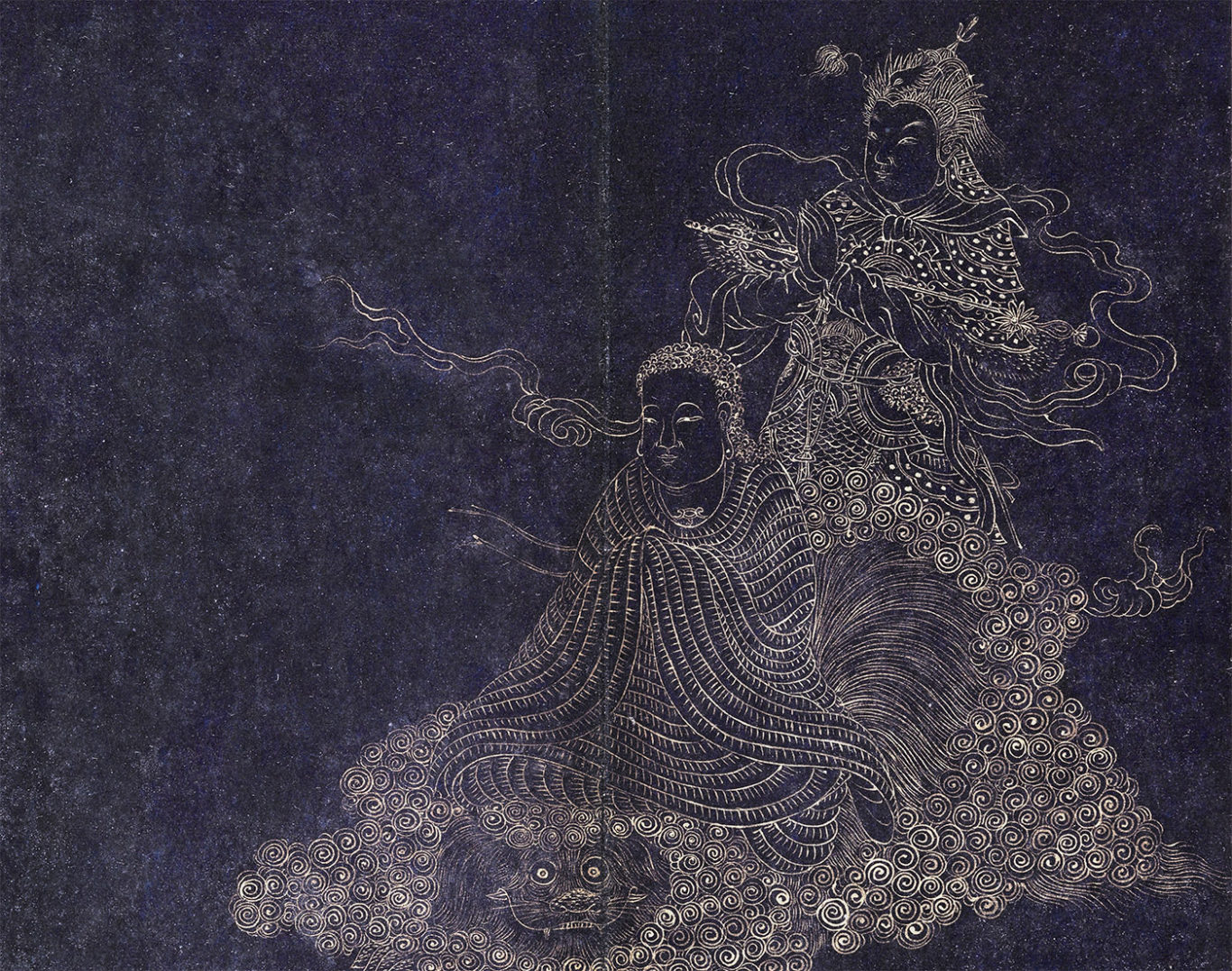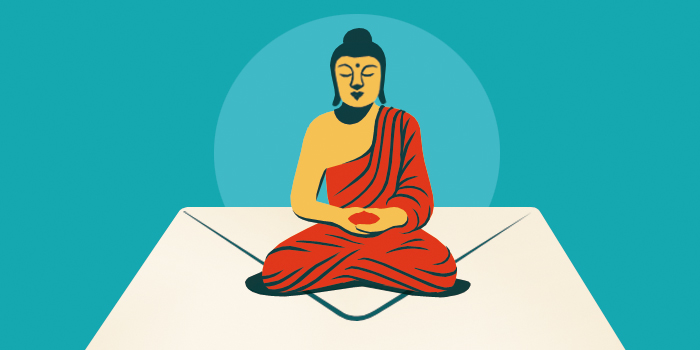What are the principal Pure Land texts?

Illustration in a 19th-century copy of the Sutra on Immeasurable Life, also known as the Larger Pure Land Sutra | The Indianapolis Museum of Art
The Pure Land tradition is founded on three sutras and two commentaries: the Sutra on Immeasurable Life, also known as the Larger Pure Land Sutra; the Amida Sutra, also known as the Smaller Pure Land Sutra; and the Contemplation Sutra. The two commentaries are Vasubandhu’s Treatise on the Sutra of Immeasurable Life and Shandao’s Commentary on the Contemplation Sutra.
The Larger Pure Land Sutra, one of two primary scriptures in Chinese Mahayana Buddhism, tells how the bodhisattva Dharmakara became Amida Buddha by fulfilling many great vows (48 in most versions), all listed in the same format: “If, when I am enlightened, such and such is not the case, I shall not become enlightened.” In the course of the sutra Dharmakara does become enlightened, so by implication the sutra describes the fulfillment of the vows and thereby the generation of the Pure Land Sukhavati as well as Amida Buddha’s action of receiving all who turn toward him.
The Smaller Pure Land Sutra is a description of Sukhavati as a miraculous world far away to the west. The sutra’s brevity and graphic imagery have made it a popular work inspiring vivid visualizations and art. Sukhavati is a radiant world in which one constantly hears the dharma, an ideal environment in which to become enlightened. The inhabitants spend their time making offerings to other buddhas in other Pure Lands; thus the concise Smaller Sutra provides both a description of a special path for the faithful and a manifesto for interfaith harmony.
The Contemplation Sutra is made up of three parts. The first describes an encounter between Shakyamuni and Queen Vaidehi that culminates in the queen’s spontaneous vision of the Pure Lands of many buddhas and choosing Sukhavati. In the second part, Shakyamuni explains to Ananda, his attendant, a visualization practice that generates a mental image approximating the experience of Queen Vaidehi. The third part sets out nine grades of spiritual attainment.
Vasubandhu’s Treatise, a brief commentary on the Larger Sutra, outlines five practices by which one can be born in Sukhavati: prostrations, calling the Buddha’s name, longing to enter Sukhavati, visualizing that land, and transferring the merit gleaned by the first four practices so that everybody can similarly benefit. The five are not separate but work together as a set. This practice became very popular throughout East Asia.
Shandao’s Commentary on the Contemplation Sutra is a distinctive interpretation of the sutra that has become normative for Pure Land schools, especially in Japan. The main points are a stress upon the difference between the nature of buddhas and that of ordinary people; a prioritizing of verbal over contemplative nembutsu; an assertion of the substantial existence of the Pure Land as more than simply a figment of the mind; and a distinctive view of the nine ranks. This last point is of crucial importance: Although the nine ranks are commonly taken as a ladder for practitioners to climb, according to Shandao’s interpretation the nine ranks demonstrate that the Buddha’s compassion extends to the most humble and is not confined to those of superlative achievement.

Tricycle is more than a magazine
Gain access to the best in sprititual film, our growing collection of e-books, and monthly talks, plus our 25-year archive
Subscribe now